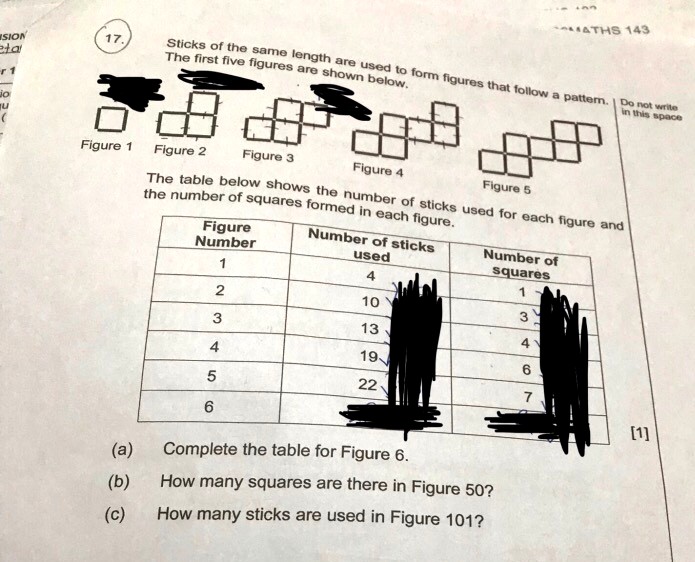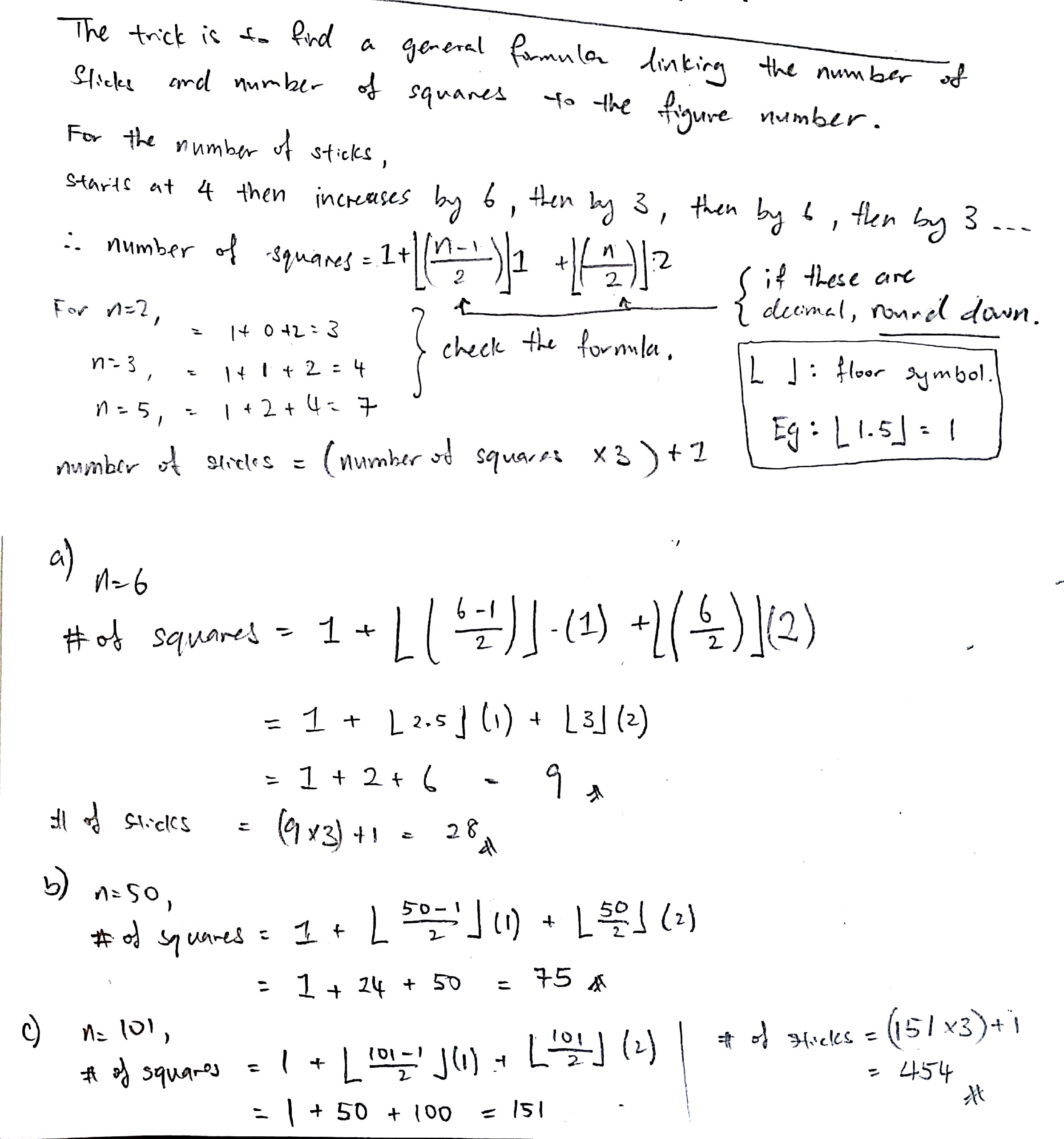Ask Singapore Homework?
Upload a photo of a Singapore homework and someone will email you the solution for free.

Question
primary 6 | Maths
One Answer Below
Anyone can contribute an answer, even non-tutors.

Pls help to provide a shorter solution without manual counting, thanks
From an odd figure number to the next odd figure number, the number of sticks increases by 9 and the number of squares increases by 3.
From an even figure number to the next even figure number, the number of sticks also increases by 9 and the number of squares also increases by 3.
You should be able to solve a) on your own.
For b), start from an even figure number in the table (for my example , I will use figure 2)
From Figure 2 to 50,
Number of jumps = (50 - 2) ÷ 2 = 48 ÷ 2 = 24
(50 - 2 = 48. But we divide by 2 as we are jumping from even figure to even figure. For every even figure we jump there is an odd figure which we cannot count in.
Eg. We jump from figure 2 to 4 but we cannot count figure 3 as a jump since we are jumping from even figure to another even figure.
So we divide the increase in figure number by 2 )
So that's 24 jumps, with increase of 3 squares in each jump .
24 x 3 squares increase per jump = 72 squares
72 squares + 3 squares from figure 2
= 75 squares.
There are 75 squares in Figure 50.
c)
I will start from figure 1 for my example.
From Figure 1 to 101
Number of jumps = (101 - 1) ÷ 2 = 100 ÷ 2 = 50
(101 - 1 = 100. But we divide by 2 as we are jumping from odd figure to odd figure. For every odd figure we jump there is an even figure which we cannot count in.
Eg. We jump from figure 1 to 3 but we cannot count figure 2 as a jump since we are jumping from odd figures to odd figures. So we divide the increase in figure number by 2)
So that's 50 jumps, with an increase of 9 sticks in each jump
50 x 9 sticks increase per jump = 450 sticks
450 sticks + 4 sticks from figure 2
= 454 sticks
There are 454 sticks in Figure 101.
Extra info
(might come useful in Secondary School math)
The problem can be solved using these formulas derived from the question information :
Number of sticks in a particular figure equals :
4 + 9(n - 1)/2 , where n is an odd figure number
10 + 9(n - 2)/2 where n is an even figure number
Number of squares in a particular figure equals :
1 + 3(n - 1)/2 , where n is an odd figure number
3 + 3(n - 2)/2 where n is an even figure number
n must equal or be bigger 1 for odd figure numbers and n must equal or be bigger than 2 for even figure numbers. n must also be a whole number.
See 1 Answer





